Zindagi Kaisi Hai Paheli – Hrishikesh Mukherjee
- K V Ramesh | kvr4060@gmail.com
Hrishikesh Mukherjee, popularly known as Hrishida, was a well-known director and an expert editor, producer, screenplay, and dialogue writer. This resulted from his early years in Calcutta (now Kolkata). He laid aside his ambitions to pursue a scientific career in favor of the magic of cinema. The world of science may have lost a brilliant scientist, but cinema gained an equally brilliant filmmaker whose view of life’s puzzles resulted in a kind of cinema known as “middle of the road cinema”.
The origins of this cinema lie with Hrishida’s Guru, Bimal Roy, easily one of India’s best filmmakers whose vision of the human struggles is something that Hrishida showed in his best films. Starting as 2nd assistant director under Bimal Roy in Do Bigha Zameen, it was clear that Bimal Roy never preached to the audience. In showing the travails of the rickshaw puller, the message came through to the audience. This was an approach that Hrishida adopted in most, if not all, his films.
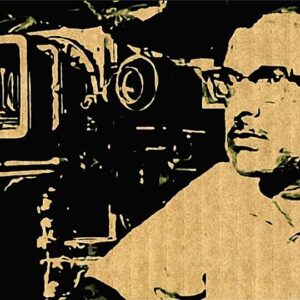 His first film as producer and director was Musafir in 1957. A film of that time to have three stories in one movie was somewhat quirky. Yet it was a successful film as it told the story of a rented house where people came in with a problem and went away with the problem solved. Like his Guru, the disciple was clear that regular commercial cinema’s song and dance routine was something that he couldn’t discard. Accordingly, the film had five songs. The most famous one is by Kishore Kumar in the second song, Munna Bada Pyara based on a Goan tune. In his only vocal performance, the third section is probably noted for one of the most unlikely duets between Lata Mangeshkar and Dilip Kumar. The tragic background of the third section is transparent in the way in which the former lovers stare at each other as they recollect the past with the lovely Raag Pilu based Chaahe jiya jaaye”.
His first film as producer and director was Musafir in 1957. A film of that time to have three stories in one movie was somewhat quirky. Yet it was a successful film as it told the story of a rented house where people came in with a problem and went away with the problem solved. Like his Guru, the disciple was clear that regular commercial cinema’s song and dance routine was something that he couldn’t discard. Accordingly, the film had five songs. The most famous one is by Kishore Kumar in the second song, Munna Bada Pyara based on a Goan tune. In his only vocal performance, the third section is probably noted for one of the most unlikely duets between Lata Mangeshkar and Dilip Kumar. The tragic background of the third section is transparent in the way in which the former lovers stare at each other as they recollect the past with the lovely Raag Pilu based Chaahe jiya jaaye”.
Hrshida’s second outing as a director was with the superhit Anari (1959). Raj Kapoor’s star charisma, Nutan’s genteel image, and above all, Shankar Jaikshan’s unstoppable music made film and the songs a significant hit. Two songs perhaps stand out in the overall movie is telling a story. The first is the gentle Raju singing the philosophy of life, which is prevalent in most Hrishida films. Some onscreen character will always say something like, “only humans can help other humans”. This is best shown by this superb song penned by Shailendra in his inimitable style and sung beautifully by Mukesh in his “Raj Kapoor voice” as he says “jeena isika naam hai”.
The second one is about the ways of the world when the hero Raju wakes up to the fact that his simplicity is being increasingly challenged in a not so simple world, and he rues the fact that he truly is an “Anadi” when he sings “Sab kuch seekha humne”.
With the credentials of a box office hit behind him, Hrishida’s journey in Hindi films and the “middle of the road” cinema started. A quick explanation is necessary here for that term. Though this kind of cinema involved all the usual elements of Hindi films, mainly the songs and dances, with a “hero” and “heroine”, the very essence of these stories were the characters. While watching any Hrishida film, it soon becomes apparent that what’s on-screen is not the star but the character. This resulted in some of the biggest stars of Hindi cinema giving some truly incredible performances, away from their celluloid “star” images! The impact of his story and screenplay was that most of the audience felt that they were watching themselves onscreen!
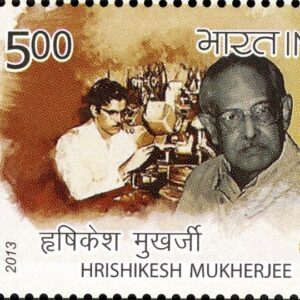
One of the best examples is Asli Naqli (1962). Dev Anand, the superstar of that era, suddenly found himself more in tune and at peace with the poor denizens of a slum that has given him an identity and protection than the vast empty mansion of his wealthy grandfather. He expresses this in the song “Asli kya hai naqli kya hai pooch dilse mere”. The other songs were also picturized memorably, as in “Chheda mere dil ne tarana tere pyar ka”, “Tujhey Jeevan ki dor se”, Ek but banaunga”, “Tera mera pyar amar”. Clearly, Hrishida saw that the music was of the highest quality, but the picturization sometimes was dull.
Between Anadi (1959) and Asli Naqli (1962), there were three films Anuradha (1960), Mem Didi (1961), Chhaya (1961). Anuradha was a woman’s quest, a famous singer, to be accepted as herself rather than just a homemaker. The film has superlative music by Pandit Ravi Shankar. Two superb songs in the movie tell the story in their own way about what’s happening on screen. Caught between her former fiancée’s increasing attention and the indifference of her husband, Anuradha sings, “Kaise din beetey kaisi beeti ratiyaa”.
Her former fiancée stares at her with fervor while her husband is indifferently ploughing through some medical journals. This is not just a song but tells a story itself and perhaps impending trouble for the indifferent husband. By the film’s end, the husband has realized his mistake, but Anuradha has other ideas. Her thoughts and dilemma come through strongly in the song “Haaye re woh din kyun na aaye”, sharing her plight of being caught between domesticity and her fame as a singer.
The charming Mem Didi was a flop. It told an unlikely but human story of two street toughs, a Muslim, and a Hindu, forming an unlikely bond with a struggling Christian nanny who wants to take care of her former ward and shield the teenager from any difficulty. The religious angle is incidental to the story wherein Mem Didi tells the duo, “Doosron ki khusi ko apna Khushi samjo, to dekho jeene ka kitna maza aata hai” (take others happiness as your own, and you will realize how much good life can be).
The big hit Chhaya told a story of a woman who is a shadow to her daughter brought up in a foster family. The melodrama was too much, but Salil Chowdhury’s music was spot on with the incredible transposition of Mozart’s Symphony No. 49 into the eternal Talat-Lata duet “Itna na mujhse tu pyar Badha”.
1962 was yet another musical hit with Aashiq, which told a dull, beaten story about a man caught between his love for music and domesticity in a totally contrived manner. The film’s best song was
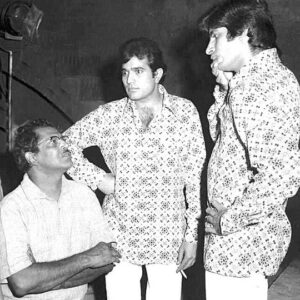
again the Mukesh-Raj Kapoor-SJ magic of “Tum jo humare meet na hotey. Thanks to the woman who silently loved him and stayed away from disrupting his married life, the hero has finally realized his dream of being a singer.
Saanjh Aur Savera (1964) had nothing going for it except the usual “woman in trouble” story that was so popular in the 1950s and 1960s. It did have a couple of famous songs picturized on
comedian Mehmood in a serious role as the heroine’s “brother”. While searching high and low for her across the city, he sings, “Zindagi mujhko dikha de raasta” .
Gaban (1966) was a project that Hrishida took charge of halfway through. The original director had died, and the inordinate delay meant that the actors looked different in different scenes. Though the songs were hits, the overall story based on a Munshi Premchand story was an average hit, helped by the songs.
1966 had three releases, Biwi aur Makan, Do Dil, Anupama. Once again, music was strong in all the films and enhanced the story, and moved it forward. Biwi Aur Makan was a rollicking comedy that deserved better than being a flop. The story of five bachelors searching for accommodation that is available only for “families with married women” forces two of them to masquerade as “wives” while the “husbands” go about their business. One of the “husbands” falls in love with the landlord’s daughter, prompting a truly hilarious song sequence, a rare male quarter with Manna Dey, Talat Mehmood, Mukesh, Hemant Kumar, as the despondent “husband” sings Dil jalta hai to jalne de , and in contrast, the others ridicule him for falling in love and ask him to drop out of it.
Do Dil was Hrishida’s first color film, a typical “Prince and the kingdom usurped “ type of story which was well worn and hopelessly predictable. Hemant Kumar’s music was excellent and delivered some excellent tracks like the Rafi track “Tera husn rahey mera ishq rahey´, “Man mora nachey”, and more.
Anupama probably belongs to any Hrishida top 10 lists. It told about the awakening of a terrorized young girl into womanhood and then overcoming her fears. Hrishida based it on a true story where one of his cousins bore the brunt of her father’s hatred as the girl’s birth resulted in her mother’s death. The conventions of the cinema demanded that the hero “help” the woman to overcome her fears. Dharmendra under Hrishida always gave excellent performances away from his “starry” image and was always the character. Here he asks the crowd to think about people who couldn’t make it in life with “Yaa dil ki suno duniyawalon”
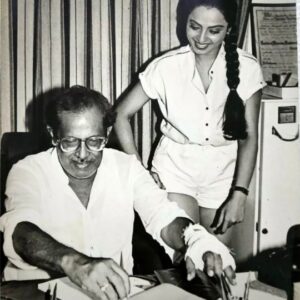
Majhli Didi (1967) was also based on a classical story about a troubled orphan being rescued by an upright woman, but the indifferent music didn’t fit into the strong story, and the film flopped despite superb all-around performances.
Aashirwad (1968) gave Ashok Kumar a National Award. He essayed a human jailed for murdering a greedy and corrupt accountant who exploited the rural poor. He is estranged from his daughter, a famous singer who uses his poems as her songs. The scene says it all as the daughter sings, “Ek tha bachpan ek tha bachpan”, lamenting the passing of time and bygone events. The film is famous for a first – perhaps the first Hindi rap song wherein Ashok Kumar sang in his own voice, “Railgaadi railgaadi”.
1969 had two releases, both of which were super flops. Pyar ka Sapna was a “woman in trouble” film, while Satyakam told a story of a man who is righteous and fights all round corruption in India. The serious theme of moral righteousness had no scope for music, which also showed in the box office results. Though Hrishida considered it his best film, and Dharmendra was so taken up with the story that the ghost produced it, and even though it was critically appreciated for its strong theme, the box office said otherwise, declaring it a flop.
1971 with three releases has sealed Hrishida’s name and fame forever with Guddi, Buddha Mil Gaya, and Anand. Guddi had only two songs but told a charming story of a film crazy teenager who sees what goes into the craft of cinema, helped by “Dharmendra the Star”. Jaya Bhaduri, in her first onscreen role, showed her brilliant talent and was almost overshadowed by Utpal Dutt as her eccentric “Professor of Experimental Psychology”. Buddha Mil Gaya had excellent music by RD Burman, picturized in a somewhat uninspired manner. The heroic duo are trying to con their “uncle” by giving a drink mixed with sedatives while their landlord’s granddaughter sings the song, the lovely Lata number “Jiya na laage mora
Anand is perhaps one of the greatest films of Hindi cinema wherein it showed that one could be under a cloud of death yet still live life to the fullest. This is also great filmmaking wherein we know right from the first scene that the main character Anand is no more, and the story is told in flashback. The best song and perhaps a metaphor for Hrishida’s entire career is the lovely Manna Dey number Zindagi Kaisi hai paheli. The film boosted Rajesh Khanna’s already meteoric rise as the first superstar winning him new accolades as a serious actor beyond the starry image! While the picturization is a bit dull (it was finished in half a day), it is also effective in that it shows Anand walking the shore with waves dashing against the shore and receding away – a symbol of the eternal cycle of life. The film was one of the offerings during the 1982 Golden Jubilee of Indian Cinema and other major films. The 21st-century generation also has found it to their liking as it syncs very well with Anand’s “thousand moments that I can live in a day”.
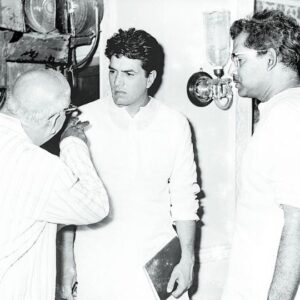
In 1972, Hrishida did an about-turn and made what he termed as “India’s first sex comedy” about two country bumpkins coming to the city seeking easy sex and loose women. Sabse Bada Sukh was hardly funny, and the audience gave it a thumbs down. The other 1972 release was the superb Bawarchi based on a Bengali story. Rajesh Khanna lent his superstar aura to the story of a dysfunctional family being united by the mysterious cook. The penultimate song ‘Bhor aayi gaya andhiyara´sees family joining in the singing in unison.
1973 gave two huge hits in Abhimaan and Namak Haraam. Abhiman, supposedly based on two real-life musician couples, was a huge hit enhanced by S.D. Burman’s superb music while Namak Haraam was about the rich-poor divide and two friends on the opposite side of this divide. The songs in both films are incidental to the story yet enhance it. Nothing tells the distance between the couple in Abhiman than the woman singing “Piya bina piya bina”. while her husband broods in his former lover’s home.
Thanks to a shapeless story, the solo 1974 release, Phir Kab Milogi made over seven years, was a flop. The only redeeming feature was R.D. Burman’s lovely music and Mukesh in a rare outing for R.D. Burman with the superb “Kahin karti hogi woh mera intezaar”.
The cerebral comedy of Chupke CHupke (1975) had hardly any scope for music. Mili was too serious, yet the two songs by Kishore Kumar for his favorite music director S.D. Burman was picturized brilliantly. Badi sooni sooni hai is seen through Mili’s viewpoint when she espies a shadowy lonely figure on the terrace flat. Aaye tum yaad mujhe talks about the intricacies of human emotion and impending death. The picturization clearly tells the story in both cases. The latter song is sorrowful in that the lonely hero who has found love with the heroine now has to confront new loneliness – her impending death!
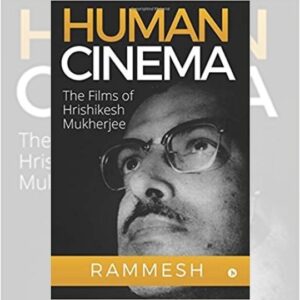
1976 ‘s Arjun Pandit won an award for Sanjeev Kumar but barely made any waves in the box office. The film also confirmed one Hrishida quirk – playing an actor or actress against their popular onscreen image. While Bindu had played the rejected woman in Abhiman who doesn’t do anything and in fact supports the wife against her former lover, Bindu played the role of the typical (filmi) mother in this movie, feeding the family and taking care of her husband and Arjun.
Alaap, Kotwal Saab, Naukri were all a string of flops. Alaap had the theme of redemption backed by some brilliant music. Since it went against the Amitabh onscreen persona, it was a flop. Then came 1979 and Gol Maal, the rollicking comedy for which Hrishida has been probably immortalized. Once again, there was no place for music, but it did have a couple of pleasant Kishore numbers as the onscreen comic mayhem unfolded.
With violence dominating the screen, Hrishida’s cinematic style was found wanting in the 1980s, and he settled for some light comedies with mixed box office results. His best was clearly past and belonged in the 1960s and the 1970s, where some of the best songs by some of the best composers of Hindi film cinema were picturized in various hues. His cinematic journey and views of life can be best summarised by the song from Anand ‘Zindagi Kaisi hai Paheli Haaye, Kabhi to hasaaye, kabhi ye rulaaye”
PS: You can also check out my book Human Cinema at https://www.amazon.in/Human-Cinema-Films-Hrishikesh-Mukherjee/dp/1643249541/ref=tmm_pap_swatch_0?_encoding=UTF8&qid=&sr=


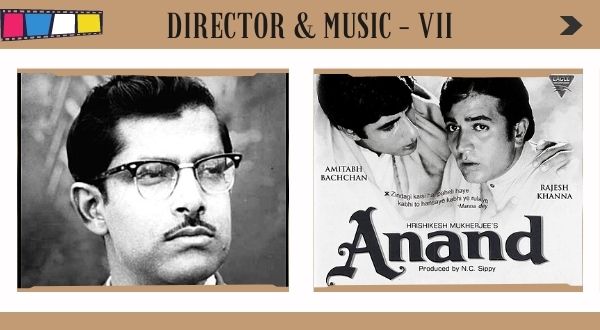
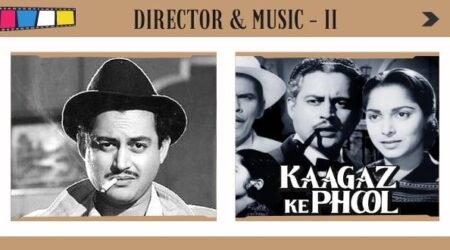
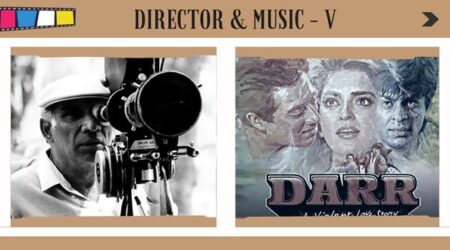
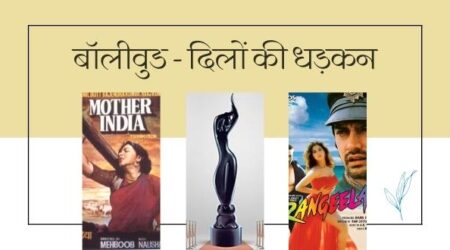


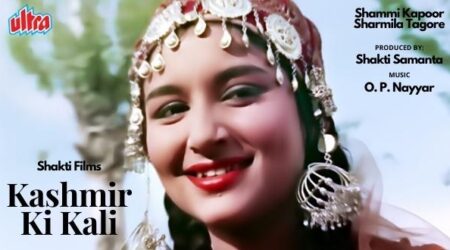
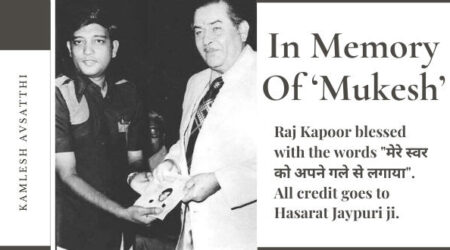
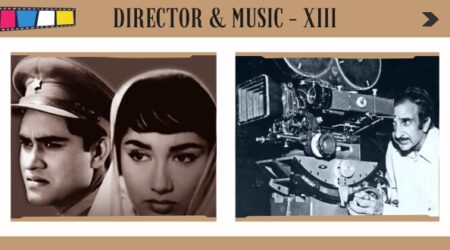
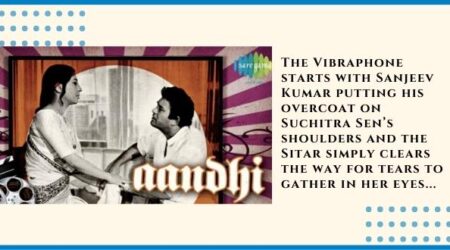
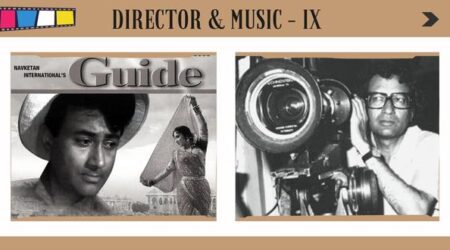

Comment (1)
Good Article ! Hrishekesh Mukharjee has always
said that “Satyakam” released in 1969, is his Best film.
Powerful acting by Dharmendra, Sharmila Tagore,
Sanjeev Kumar and Ashok Kumar. Persuasively directed.